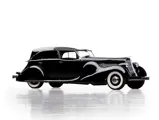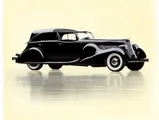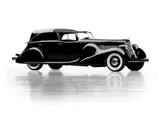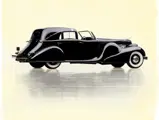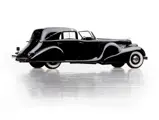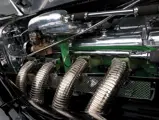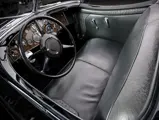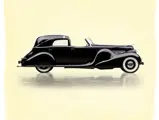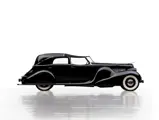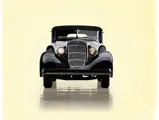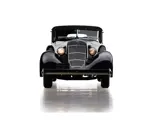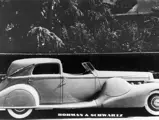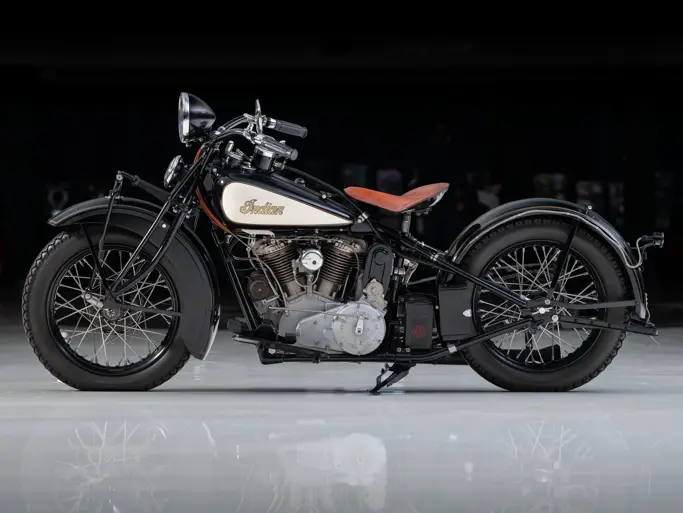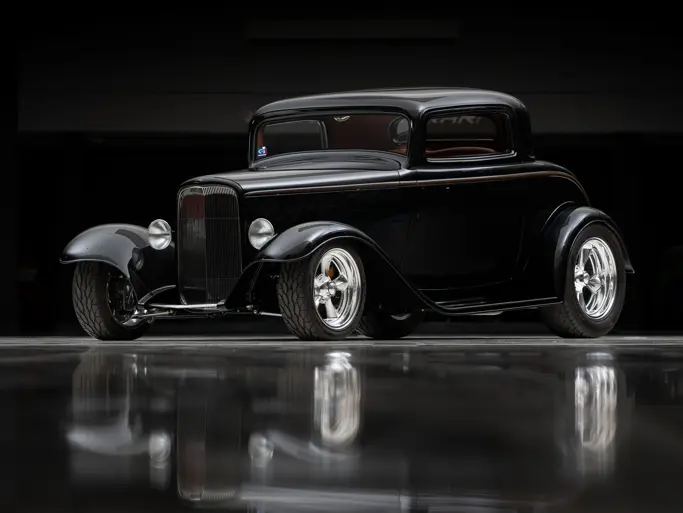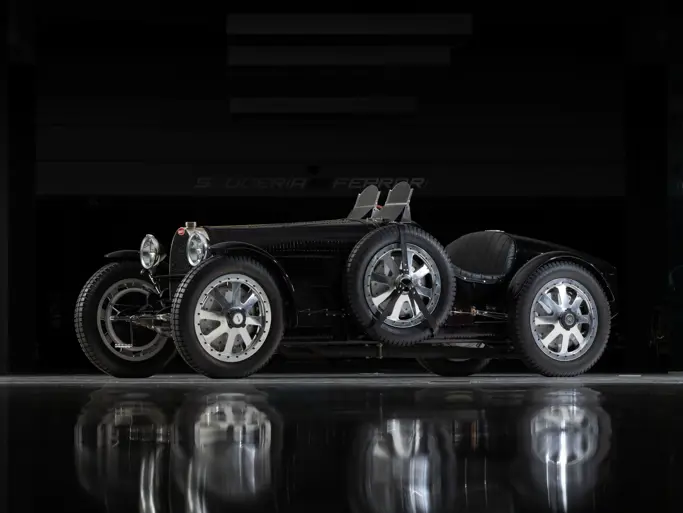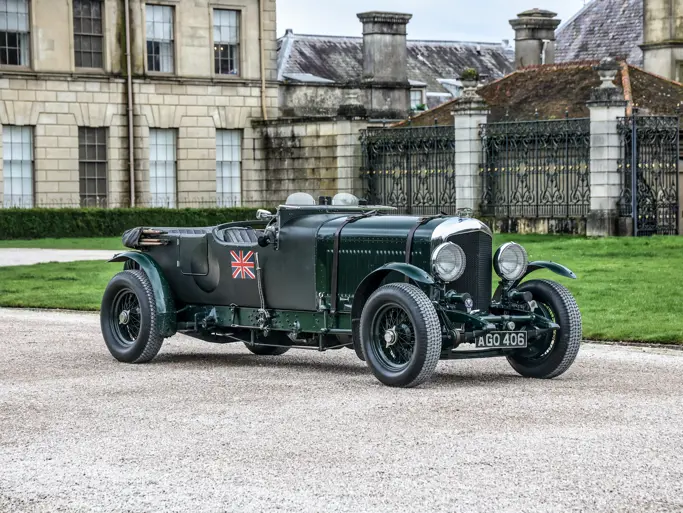The Andrews Collection
1935 Duesenberg Model SJ Town Car by Bohman & Schwartz
{{lr.item.text}}
$3,630,000 USD | Sold
 | Fort Worth, Texas
| Fort Worth, Texas
{{internetCurrentBid}}
{{internetTimeLeft}}

- A one-off streamlined creation on a factory-supercharged chassis
- Designed for Mae West; built for candy heiress Ethel Mars
- Formerly owned by William Harrah and Richard Dicker
- Featured in all of the important Duesenberg texts
- Original engine, chassis, and body; ACD Certified Category 1 (D-044)
- The ultimate SJ Duesenberg
320 bhp, 420 cu. in. DOHC inline eight-cylinder engine with a centrifugal supercharger, three-speed manual transmission, beam-type front and live rear axles with semi-elliptic leaf springs, and four-wheel vacuum-assisted hydraulic drum brakes. Wheelbase: 153.5 in.
After the Walter M. Murphy Company, of Pasadena, California, closed its doors in 1932, former employees Christian Bohman and Maurice Schwartz continued work on their own. They rapidly took up Murphy’s surviving customer base and evolved many of their former employer’s designs, as well as created several new bodies on Model J and SJ chassis. Many of the latter were designed by Duesenberg’s new chief factory designer, J. Herbert Newport, who brought with him a more flamboyant line than his predecessor, Gordon Buehrig.
In the book that he later co-wrote with Louis Steinwedel, Duesenberg, Newport included his original sketch of a streamlined design for a formal open-drive town car, along with a caption that read, “A design originally created by J. Herbert Newport for Mae West in 1934.” This would have been one of Newport’s first designs for a Duesenberg chassis, but it clearly showed ahead-of-its-time thinking, with its sweeping, curvaceous fender lines, European-style rear wheel “spats,” and side-mounted spare “shrouds” that eventually made it onto the final car.
Ms. West, the famously vivacious actress, eventually declined the design on the basis of either cost or impatience for its creation, depending upon whom you ask. It was instead picked up by another fascinating lady, Ethel V. Mars, who would will and fund it into being on a factory-supercharged, 320-horsepower SJ chassis. Duesenberg built only 38 superchargers, which were moved around to roughly 50 different chassis during the “factory era.” The Mars car, engine number J-553, is significant for having been supercharged from new and for being one of very few four-door “formal” cars that were so-equipped. More importantly, its styling cues would inspire future Bohman & Schwartz and Newport designs, as well as set the design curve that would be followed by the last remaining West Coast Duesenbergs.
ETHEL’S YEAR
The year 1935 was a good one to be Ethel Mars. She was the widow of the inventor of the Milky Way and Snickers bars, among other confections, and had begun raising and training race horses on their 2,800-acre Tennessee farm. Within a year of her husband’s death, she had proved herself to be both a capable businesswoman and a superb judge of equine talent.
Milky Way Farms’ top-of-the-line horses had won $107,565 in 1935 alone, after which their owner went on bit of a spending spree, leaving behind $108,000 for 29 yearlings at the annual Saratoga sales. She also picked up a new Duesenberg SJ chassis, the car offered here, which she promptly sent off to be bodied with the design that had originally been created for Mae West.
The car reportedly cost $20,000, which would put it in the realm of the most expensive Duesenberg ever built. It was finished in Chinchilla Grey, with fur carpeting in the rear passenger compartment and grey upholstery, to which Mrs. Mars had her chauffeur’s uniform made to match. The distinctive art deco interior design, with its delicate door moldings and plush rounded cushions, was fully Bohman & Schwartz, although it had been adapted from Murphy’s design for a Cord L-29.
The completed Duesenberg was extensively photographed when new, including by Bohman & Schwartz at the factory in Pasadena, and it also had a brief appearance in the November 16, 1936, issue of Time magazine, during its New York Auto Show coverage. It was also used, with Mrs. Mars’s chauffeur at the wheel, in advertisements for Vogue Tires, whose double-sided whitewalls could be found on the car.
KNOWN PROVENANCE
According to the records of Duesenberg historian Dwight Schooling, the Model SJ remained with Mrs. Mars until her passing in 1945. The following year, it was sold by her estate to renowned Chicago Duesenberg dealer John Troka for $2,500. Over the next six years, it would be passed from Troka to a handful of Chicago-area owners, at one point being used as a taxi and then as a local bank president’s “rainy day car.”
In 1951, the Duesenberg was sold by Troka to Walter and Wladzia Podbielniak. The Podbielniaks, both talented engineers and inventors, had made a considerable fortune in manufacturing laboratory equipment and lived a flamboyant nouveaux riche lifestyle. Mrs. Podbielniak would be chauffeured between the couple’s State Street offices and their Lake Shore Drive castle in the Duesenberg or drive herself in a Delahaye upholstered in leopard skin.
The Podbielniaks’ lifestyle was brought down by their eventual divorce, the breathless details of which occupied Chicago’s gossip pages for some time. A liquidation sale of the Lake Shore Drive house was held in 1961, but Wladzia’s reserves on her cars were not met, and she held onto the three automobiles until 1966, when she sold them en masse to William Harrah for his famous Automobile Collection in Sparks, Nevada.
The Duesenberg remained on display in the Harrah Collection, in largely original and somewhat shopworn condition, for 20 years. Prior to its sale in 1986, it was refinished in bright red by the Harrah’s shop and was then sold to retired railroad executive and car collector Richard Dicker.
Mr. Dicker proceeded to give the Town Car the total restoration that such an important car justifiably deserved, which was left in the hands of Robert Turnquist’s Hibernia Auto Restoration of New Jersey. Hibernia refinished it in Chinchilla Grey Poly, correctly reupholstered the interior, and installed a correct reproduction supercharger after replacing the original unit, which, as on most SJs, had been removed in the 1940s. In this form, the car was widely shown all over North America at various concours d’elegance.
Following Mr. Dicker’s passing in 1995, his Duesenberg was sold to the Blackhawk Collection. It went on to be owned by two further respected enthusiasts in the coming years, and then it found its way into the Andrews Collection. By this time, the car had been refinished by RM Auto Restoration in its present menacing black livery and with an interior to the original design but in bright coral, as a dazzling counterpart appropriate for a wealthy socialite. The car has been beautifully preserved during its time in the Andrews Collection, still appearing fresh in every detail, and it has made only a handful of appearances at major concours d’elegance, including Amelia Island.
IN EVERY BOOK
As an exceptionally well-known and important Duesenberg, the so-called “Mars Town Car” has been the subject of numerous magazine feature articles, with the most prominent being the December 1987 issue of Car Collector magazine. It is noteworthy for appearing in every book published on the Duesenberg marque, including Josh Malks’s Illustrated Duesenberg Buyer’s Guide (page 94), J.L. Elbert’s The Mightiest American Motor Car (page 58; photos on pages 62 and 63), Fred Roe’s The Pursuit of Perfection (page 139), and Dennis Adler’s Duesenberg (pages 120 and 121). Its history file includes not only Mr. Schooling’s report on the car but also the large reference file from the National Automobile Museum and its certification paperwork from the Auburn Cord Duesenberg Club, which recognizes it as a Category 1 car, number D-044, which was issued during Harrah’s ownership.
This Duesenberg is a singular car that had been owned by singular people, and it has few equals.

